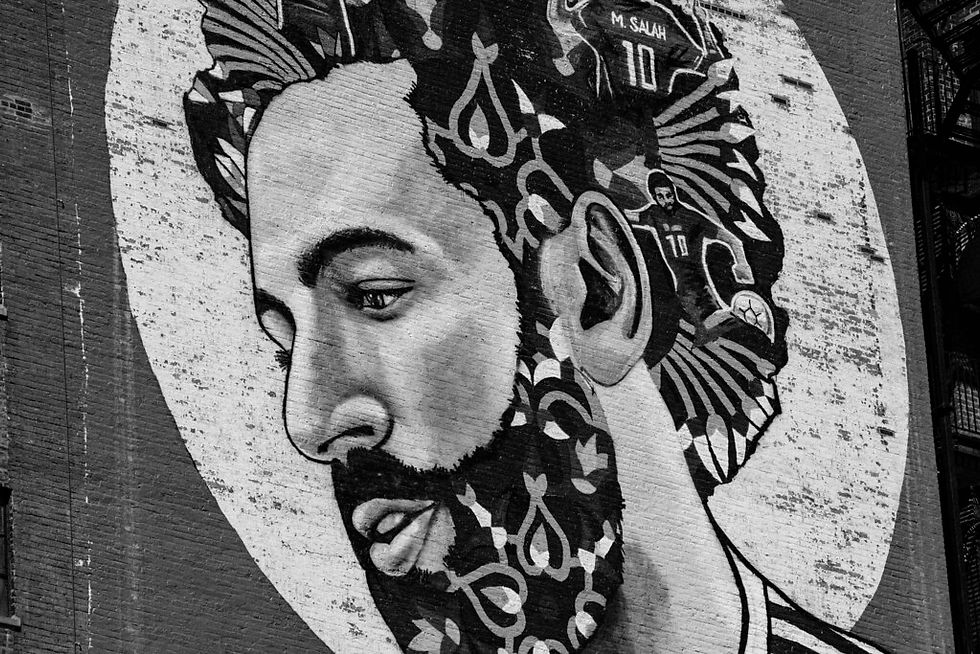Mickey Mouse and Activism in Egypt
- Hossam Fazulla
- Oct 21, 2020
- 3 min read
Updated: Nov 9, 2020
In the latest Egyptian presidential elections which took place in March 2018, more than one million Egyptians voted for the footballer Mo Salah . The Liverpool football player and Egyptian icon was not however running for presidency. In fact, voters found themselves facing only two options: the current president Abd-El-Fattah El-Sisi or his backer Moussa Moussa. More than five contenders including the former military Chief of Staff Sami Anan - whether prosecuted or detained – were forced to withdraw from the race. Most recently, in April 2019, the constitution was amended to secure El-Sisi’s rule until 2030.
Although humorous, voting for Salah was one of the few acts of resistance which took place in Egypt after the 2013 Rabaa massacre, which left nearly one thousand supporters of the Muslim Brotherhood dead, according to a report by HRW in 2014 . After the deadly crackdown, the new government released its anti-demonstration law which prohibited the gathering of more than ten people in any public space and suppressed all forms of peaceful demonstration. The number of prisoners of conscience rose to 60,000 people in 2017 . In such way, the Egyptian public sphere came under tight control, confirming the failure of the 2011 revolution, and the full control of the autocratic military state.
These desperate measures have left no space for conventional activism. However, they have prompted activists to be more innovative and creative when expressing dissent. Similar to voting for a footballer in elections, the past seven years in Egypt have witnessed new creative forms of activism, utilising new media and the almost non-existent space for freedom of expression which still exists.
In October 2015, millions of Egyptians logged onto their Facebook accounts to see a picture of El-Sisi, the current Egyptian president, with the ears of Disney’s famous character Micky Mouse, posted on their News Feed. The photo was created by Amr Nohan and was shared by thousands of Egyptians after Nohan was sentenced to three years in prison for designing it. The large number of shares made it difficult for the state authorities to take action, while simultaneously amplifying Nohan’s satirical message.
On the 11th of May 2016, thousands of Egyptians posted selfies of themselves covering their eyes on different social media platforms with the caption: “Does the Camera Rattle You”. This phenomenon was a reaction to the arrest of the satirical street performance group “Atfal Shaware” (Street Children) for criticising El-Sisi. The campaign’s slogan was a direct commentary on the absolute ban of the use of cameras in the streets of Egypt whether for amateur or professional purposes, without special permits from several authorities.
Similarly, in 2018, a campaign started in solidarity with the imprisoned photojournalist Shawkan, who was facing the death penalty for covering the Rabaa Massacre. Activists posted pictures of themselves miming the act of shooting an invisible camera as a tribute to Shawkan’s photograph behind bars.
Lastly, one online activity echoed in Cairene neighborhoods through utilising new, safe and creative spaces for activism. In 2017, the streets of Egypt were occupied by children playing with a simple plastic pendulum toy which they called Bedan El-Sisi, or El-Sisi’s testicles. The toy gained its sarcastic name and popularity after a short video was shared online of an anonymous individual asking a young boy: “What is the name of that toy?” “Bedan El-Sisi” the kid replies. In Egyptian slang, the term “testicle” signifies something unpleasant and distasteful. Hundreds of similar videos were created and shared online corresponding to this video. Not only was this intervention playful and sarcastic, but it also made a significant intervention in both reclaiming public spaces whilst side-stepping perceptions of threatening, conventional political action. At the same time, it opened up cultural spaces that were accessible for children. Having children in the forefront of the collective action both amplified its sarcasm and ensured its safety.
The concept of the public sphere, in its ideal form, is an open space for citizens to come together, despite their differences and without any forms of discrimination, to discuss their official matters and take part in their own governance. Despite the crackdown on freedom of expression and the public sphere, people have always found creative and artistic ways to push the boundaries and perform their active citizenship. In Egypt, doors for creativity are continuously opened by the people who have held new, innovative, and collective forms of activism. These movements have made it clear through their use of art and reclaimed space, that to render citizens passive is impossible.


Comments